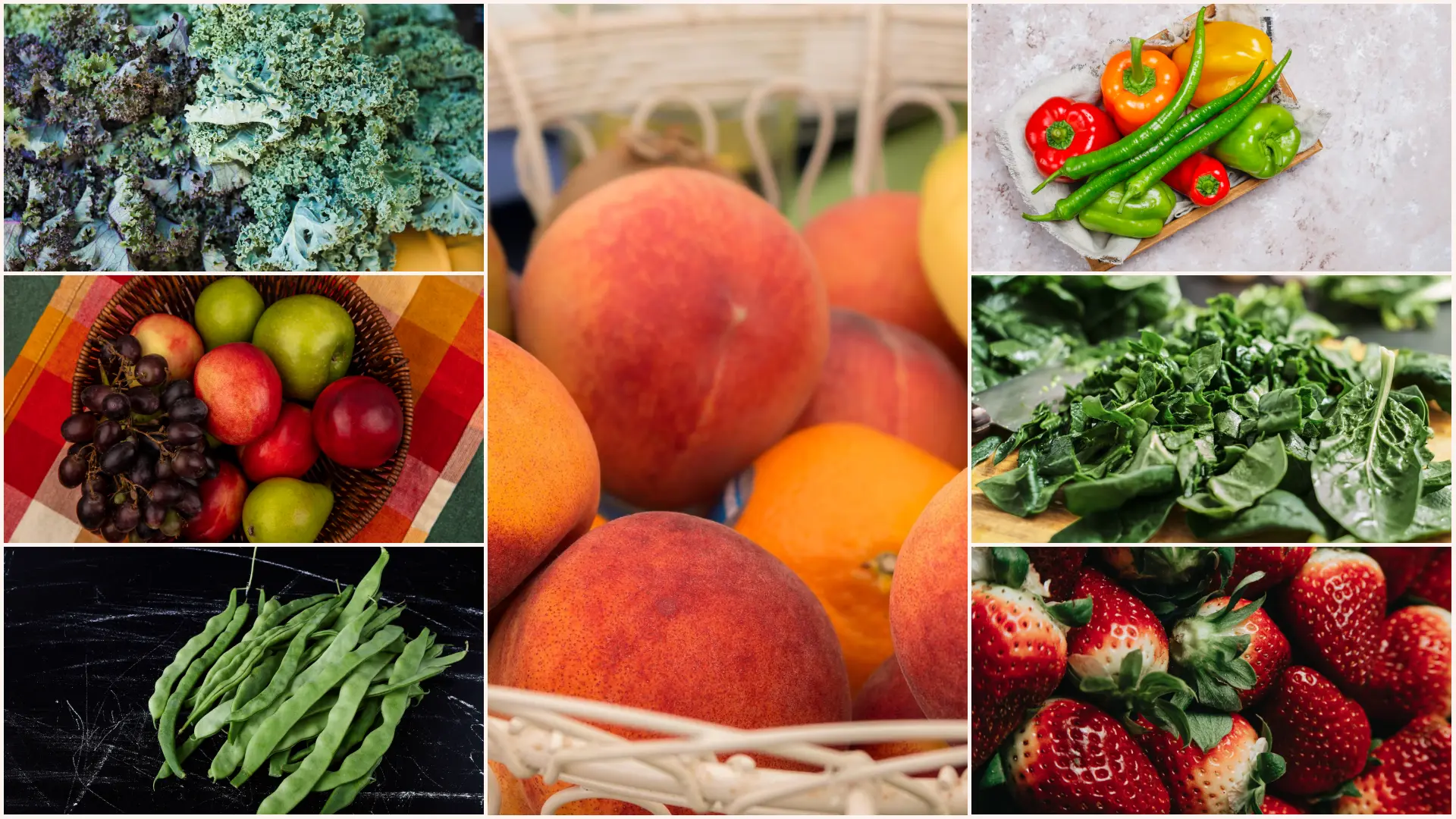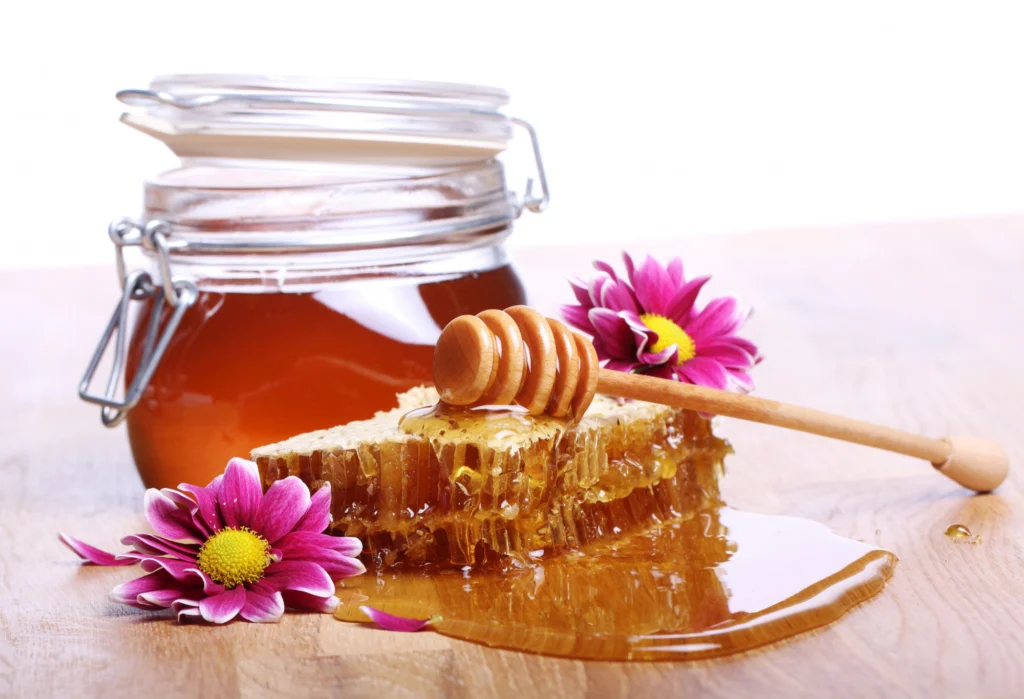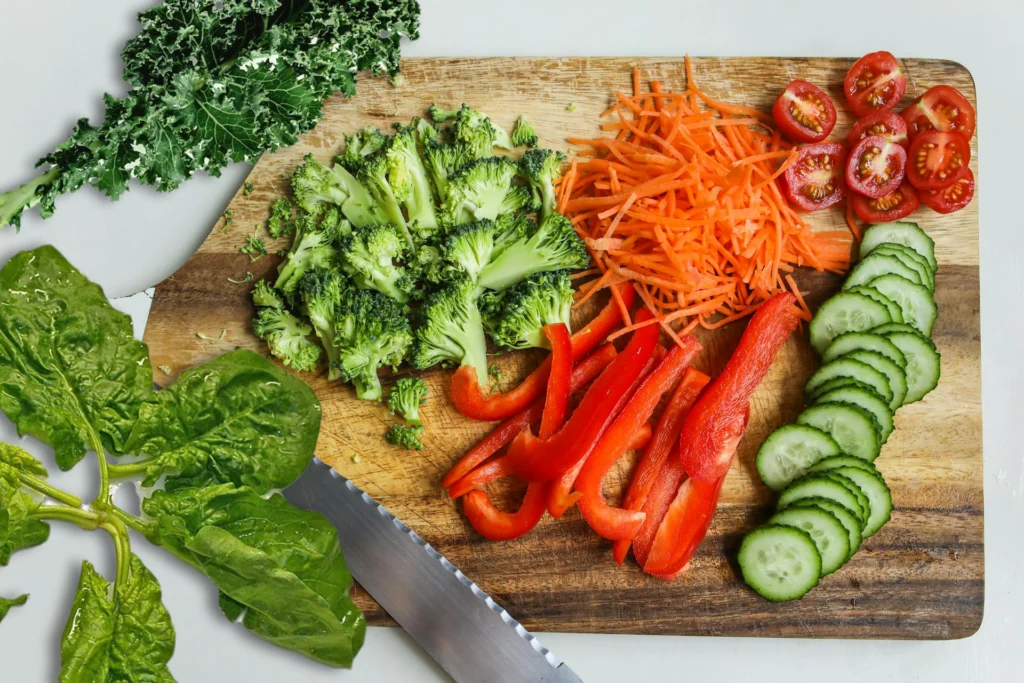Ever heard someone say, “That’s one of the Dirty Dozen foods — skip it unless it’s organic”? If not, you’re about to unlock a simple tool that helps you make smarter choices every time you walk through the produce aisle.
Whether you’re a new parent, a health nut, or just trying to shop clean without overspending, understanding what “Dirty Dozen foods” really are might be the easiest food swap you make this year.
Let’s break it all down.
What Exactly Are Dirty Dozen Foods?
The Dirty Dozen is a yearly list put together by the “Environmental Working Group (EWG)”. It’s made up of twelve fruits and vegetables that — even after washing — show the highest levels of pesticide residue.
These aren’t obscure, hard-to-find items either. We’re talking about everyday staples: apples, strawberries, grapes, spinach. Stuff you or your kids probably eat often.
The list is based on data from the USDA, where they test thousands of produce samples. The goal? Help shoppers know which foods are best bought organic.
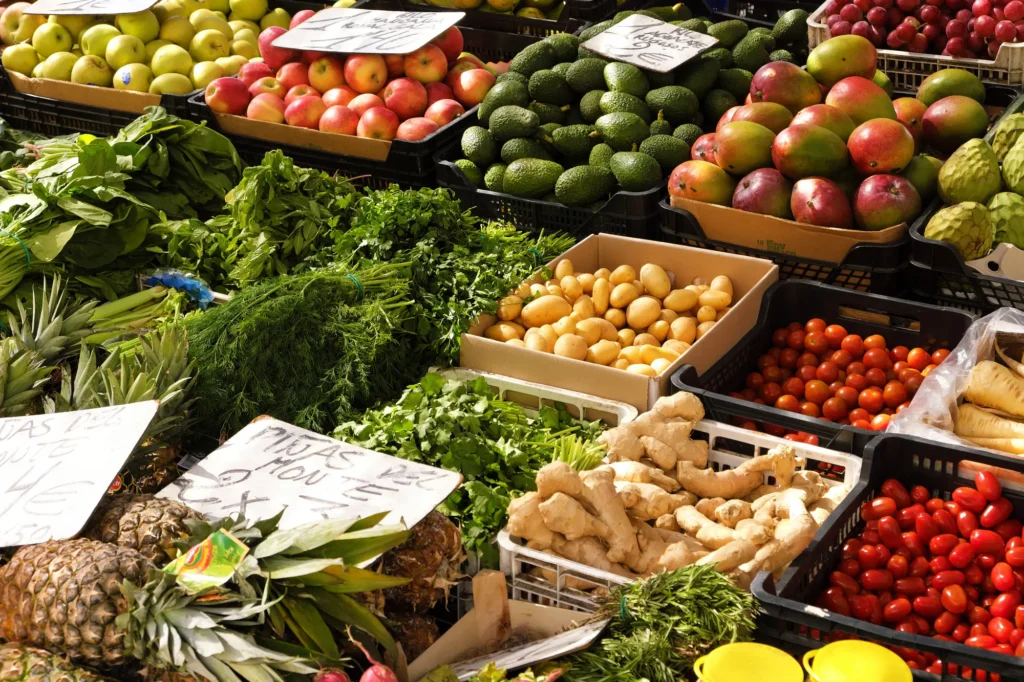
Check the 2024 Dirty Dozen list from EWG
Why Do Dirty Dozen Foods Matter?
The concern isn’t just about a single bite of non-organic produce. It’s about consistent, repeated exposure over time.
Studies show that some pesticides are linked to hormone disruption, reproductive issues, and even neurological effects — especially in developing children or pregnant people.
And while government agencies set “safe limits,” the mix of multiple chemicals over time still raises eyebrows in the science world.
How Pesticide Exposure Builds Over Time
Short-term exposure may not feel noticeable — but it’s the long game that matters.
Many pesticide chemicals are known to accumulate slowly in the body. When you eat small amounts consistently, those traces can add up, especially in people who eat a lot of fresh produce or feed it to their kids daily.
That’s where choosing cleaner options for the highest-risk foods (like the Dirty Dozen) can help shift the long-term balance in your favor.
The Latest Dirty Dozen Foods (2024 Edition)
Here’s the current list of most pesticide-laden produce — according to USDA testing:
- Strawberries
- Spinach
- Kale, collard & mustard greens
- Grapes
- Peaches
- Pears
- Nectarines
- Apples
- Bell peppers
- Cherries
- Blueberries
- Green beans
You don’t have to memorize it — just know these are the ones worth buying organic when you can.
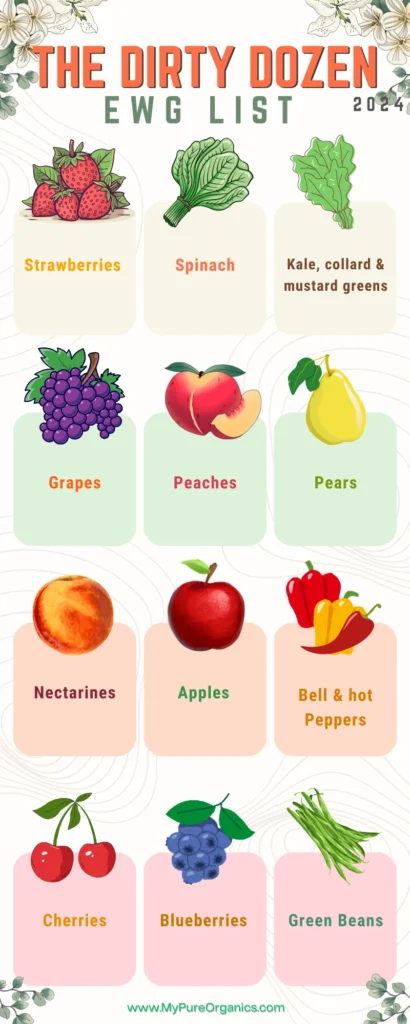
Dirty Dozen vs Clean 15: What’s the Difference?
Right next to the Dirty Dozen is the “Clean 15” — a list of fruits and veggies that test low for pesticide residue, even when grown conventionally.
Some examples from the 2024 Clean 15 list include:
- Avocados
- Sweet corn
- Pineapple
- Onions
- Frozen peas
- Asparagus
- Mushrooms
So if your budget doesn’t allow for everything organic, the Clean 15 can help you prioritize.
View the full Clean 15 list.
Who Should Be Most Concerned About Dirty Dozen Foods?
The truth? Everyone eats these foods. But babies, young children, and pregnant women are most vulnerable.
Their bodies are still developing, and even small exposures can affect hormones, brain growth, and gut health.
This is why pediatricians often recommend organic produce especially during the first few years of life. It’s not about being perfect — it’s about protecting what matters most.
If you’re figuring out what to feed your baby and want safer options from the start, this guide can help: Organic Baby Food 101
Are Dirty Dozen Foods Safe If You Wash Them?
You might be wondering — can’t I just rinse everything really well?
Sure, washing helps. Peeling does too. But here’s the thing: some pesticides don’t just sit on the surface. They’re absorbed into the flesh of the fruit or veggie as it grows. Others are sprayed repeatedly during ripening.
Even produce scrubbed under running water or soaked in baking soda may still have residues left behind — especially for foods like strawberries or spinach that have delicate skins and layers.
Bottom line: Washing is a good habit. But when it comes to Dirty Dozen foods, choosing organic is the more reliable solution.
How to Shop Smart Around Dirty Dozen Foods
Let’s say you’re walking into the store right now — here’s how to make smart swaps:
- 🍓 Buying strawberries? Go organic. But for bananas? Conventional is probably fine.
- 🛒 Look for store-brand organic produce — cheaper but still regulated.
- 🧊 Frozen organics are often more affordable and just as nutritious.
- 🌽 Sub in Clean 15 options for common meals — like using corn or avocados more often.
Start with a few key swaps — not a full cart overhaul. It still counts.
Budget-Friendly Ways to Avoid the Dirty Dozen
Going organic doesn’t have to mean going broke. Here’s how to work around it:
- Shop seasonal. Apples in fall, berries in summer — prices drop naturally.
- Check local farmers markets. Many small farms use low-spray practices even if they’re not certified organic.
- Buy in bulk + freeze. Grab that 3 lb. bag of organic spinach, portion it out at home.
- Watch store flyers. Organic specials are way more common than they used to be.
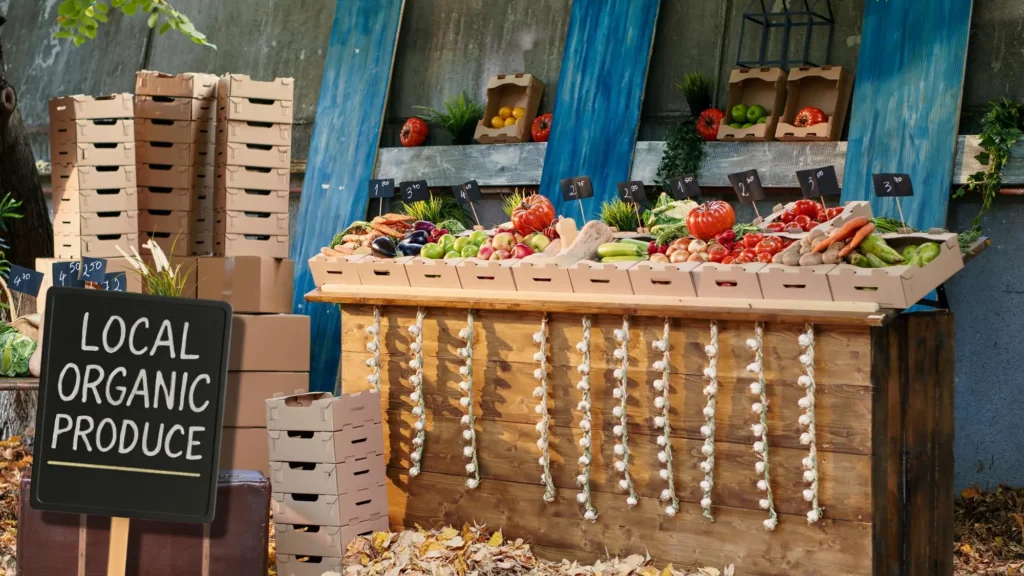
Don’t Overlook Frozen Organic Produce
Frozen fruits and veggies are often harvested at peak freshness, then flash-frozen to lock in nutrients.
That means you’re getting high-quality nutrition — often for less — and with longer shelf life. Look for frozen organic strawberries, spinach, or blueberries to stretch your grocery dollars while skipping the pesticide load.
I use frozen spinach in soups, and frozen berries for quick purées or toddler smoothies.
One more tip? Keep a printed copy of the Dirty Dozen + Clean 15 list on your fridge. It’s a quick gut-check before every grocery run.
Dirty Dozen Foods and Babies: What Parents Should Know
Babies eat more food per pound than adults — and they’re still developing. That makes them more vulnerable to even trace chemicals.
Research has shown that when kids switch to organic versions of common foods, the pesticide levels in their urine drop fast — sometimes within days.
See study on pesticide reduction from organic diets – NIH
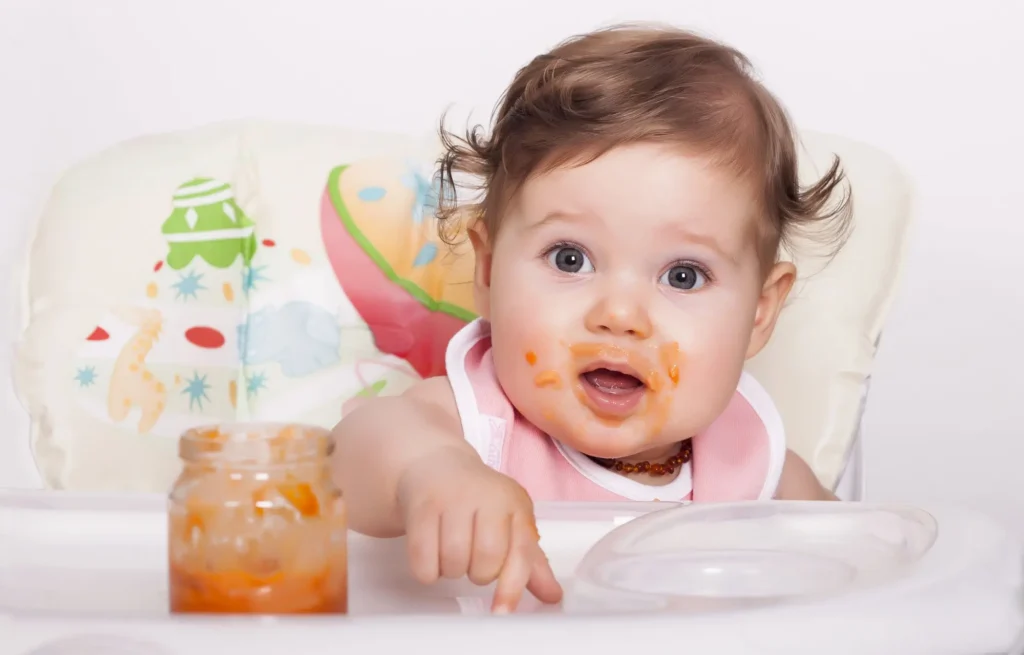
A Few Small Swaps That Helped Me Feed My Baby Cleaner
I didn’t toss everything in our pantry when I learned about pesticide risk. I just started with what my baby ate most.
First swap? Applesauce. I switched to an organic one that was easy to find. Then came frozen peas and sweet potatoes — simple stuff I could steam and freeze in cubes.
Those little shifts didn’t feel hard. And knowing they skipped the highest-spray crops? That gave me more peace of mind at mealtime.
Need baby food ideas? Here’s one to start with: Baby Food Recipes for 6–9 Months
What If You Can’t Always Buy Organic?
Here’s the truth: “you don’t have to do this perfectly”.
No shame if your carrots are conventional this week. Or if you buy the non-organic apples because they were on sale. Life happens.
The 80/20 Rule That Helped Me Stay Sane
I used to stress about making every single thing organic — and honestly, it burned me out. Then a friend shared something that stuck: go 80/20.
Make the foods you eat often — like apples, greens, or berries — the cleanest. The rest? Do what you can, when you can. Canned beans? Conventional is fine. Garlic? I don’t lose sleep over it.
That small mindset shift made clean eating feel possible again — not perfect, just doable.
Instead, use these rules:
- Prioritize the Dirty Dozen when buying organic
- Buy Clean 15 foods conventionally to save
- Peel when possible
- Wash with vinegar or baking soda soaks
- Keep doing your best — that’s more than enough
Eating cleaner is about progress — not pressure.
Final Thoughts: Cleaner Produce Starts With Smarter Swaps
You don’t have to overhaul your entire lifestyle to reduce pesticide exposure. Just start with the foods that matter most — the ones your family eats often and the ones that land on the Dirty Dozen list year after year.
Swap the apples. Try organic spinach. Freeze organic berries when they’re on sale.
And remember — every single choice you make adds up over time.

